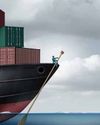India leads the world in terms of seafood exports and a little help from the government in terms of incentives, subsidies and removing export barriers can help in exploring new markets.

Many of the shrimps and fish served on platter in the US, Europe and some of the South East Asian restaurants find their origin from India. India is the second largest fish producer in the world and accounts for nearly 6 per cent of global fish production. But still India’s substantial fishery resources are said to be underutilized and there is tremendous potential to further increase the output. Fish production has grown 6.5 fold in the last two decades with freshwater aquaculture contributing over 95 per cent.
A few years back, in 2012-13, the South East Asian countries were the major Indian seafood export market (23 per cent) followed by European Union (21 per cent) and USA (21 per cent). However, in the recent years, the equation has changed with the US occupying the top notch followed by China, Europe and UAE. Ready to cook and ready to eat products are in greater demand in these markets. Seafood exports are also a major source of foreign exchange and the industry had remained unshaken even during the economic meltdown in 2004. Indian seafood exports are the best in quality as our standards are very high and we have the largest number of European Union approved factories in the world.
Exports
Indian exports have posted a continuous growth in the past five years with Vannamei posting a growth of 23 per cent last year. While seafood exports happen through most of the ports in India, not every port has an up-to-date infrastructure for handling reefer cargo. “The ports in Odisha do not have reefer facility and so we have to divert our exports to Vizag and Kolkata ports. Even at these ports it takes about five weeks for exporting cargo to distant markets such as the US. To expedite exports ports need to start express services that can transport reefer cargo to distant markets in a shorter time,” avers Tara Patnaik, Chairman, Falcon Marine Exports.
Bu hikaye Maritime Gateway dergisinin September 2017 sayısından alınmıştır.
Start your 7-day Magzter GOLD free trial to access thousands of curated premium stories, and 9,000+ magazines and newspapers.
Already a subscriber ? Giriş Yap
Bu hikaye Maritime Gateway dergisinin September 2017 sayısından alınmıştır.
Start your 7-day Magzter GOLD free trial to access thousands of curated premium stories, and 9,000+ magazines and newspapers.
Already a subscriber? Giriş Yap

Impact Of Covid-19 On Shipping And Logistics
Industry stalwarts discuss threadbare the prevailing logistics and supply chain scenario and issues in clearing cargo during the COVID-19 lockdown

Digital Platforms Defy Lockdown
Digital trading modules such as eNAM are enabling farmers to move their produce from farm to market even during the lockdown

GARMENT TRADE TRAMPLED
As retailers face a shutdown in US and Europe, the cascading affect has caused mass cancellation of orders in Bangladesh

TRADE RESUMES WITH CHINA
While India has allowed uninterrupted movement of imports into Nepal even during lockdown, China is reopening its borders as it emerges from the pandemic
LESS HUMAN INTENSIVE, MORE DATA DRIVEN
AI provides transformational opportunity for logistics industry by improving customer experience, operational efficiency, faster turnaround time and lower cost while ensuring security and transparency. Macro environment requires industry to transform to be less human intensive, agile and data driven, all of which can be accelerated by AI adoption, shares Gangadhar Gude, Founder & CEO, atai.ai

SHAKEN AND STIRRED
The COVID-19 pandemic has partially paralysed the logistics and supply chain, but the industry is still deterred to ensure supply of essentials continues

TRADE STUCK, ECONOMY SLOWS DOWN
Sri Lankan economy slows down as trade deficit widens and supply chain disrupts amidst lockdown

LENDING INTELLIGENCE TO SUPPLY CHAIN
If you’re shipping millions of dollars’ worth of pharmaceuticals, high-end electronics, expensive seafood, or precious metals, what would you be willing to pay for the ability to ‘ask’ your shipment where it is right now and whether it’s ok? What would you pay for a freight smart enough to raise an alarm before it spoils? Artificial Intelligence enables that and much more…

CONTAINER LINES SIGNAL ‘SOS'
As the per-unit cost of operations increases many lines are forced to blank sailings which has hit their bottom line real hard. The Government and Terminal Operators therefore need to actively consider reduction in Vessel Related Costs

IMO 2020 And The Covid-19 Curse
The COVID-19 outbreak has shaken and stirred the already volatile bunker market. While the refiners adjust their capacities and shipping lines choose their path to compliance, the market dynamics are yet to reach an equilibrium